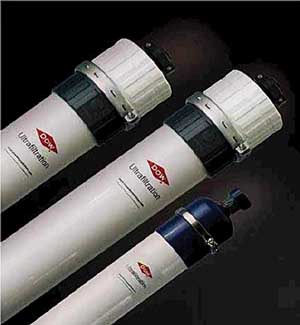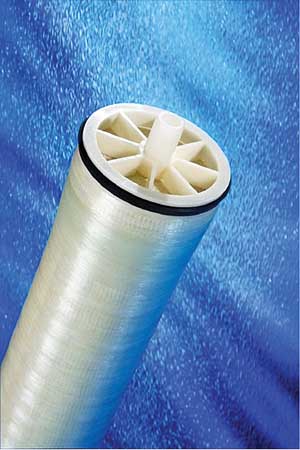Avoid These 10 Mistakes When Selecting Your New Water Treatment System
There are a number of reasons why your plant might be looking at new water pretreatment equipment in the near future. One common reason is the addition of new generating capacity. For many utilities, adding generation to an existing site has proven to be far simpler than obtaining the permits for a "greenfield" site. The added generation might be in the form of simple-cycle combustion turbines for peak power demands (see pp. 26 and 30 for examples) or a high-efficiency combined-cycle power plant. Regardless of the type of new generation, you can be sure that it will require additional high-purity water for processes ranging from direct steam generation to power augmentation, NOx control, and washing the blades of the combustion turbines.
Another reason to consider new water pretreatment equipment is that plant staff are finding existing ion exchange units are becoming increasingly difficult to maintain and expensive to operate. These problems may be compounded by a plant water supply that has changed since the water treatment equipment was originally specified. Typically, the current water supply may have higher levels of suspended solids and dissolved solids than the equipment was originally designed to handle.
Reverse osmosis (RO) systems have become a favorite in more and more installations and are being successfully used with some very poor quality (high-turbidity, high-salt, high-organic) waters. The major equipment companies continue to improve RO and ultrafiltration (UF) systems, increasing the water production rates and reducing the equipment footprint (Figure 1).

1. Design changes. Dow claims that its new UF membranes can reduce the water treatment equipment footprint by 33%. Courtesy: Dow Water and Process Solutions
If you are in the market for a water treatment system retrofit or upgrade, or perhaps are preparing specifications for a new water treatment plant, it pays to learn from others’ mistakes. Here is my Top 10 list of design mistakes made when new water treatment equipment is specified.
-
Improperly specifying or characterizing the makeup water to the equipment — particularly the silt density index (SDI) on an RO. I can’t overemphasize the importance of properly characterizing the incoming water supply before preparing equipment specifications. Take multiple samples, at different times of the year and under various operating conditions. Remember to measure the temperature of the water and total suspended solids (TSS), or, better yet, SDI on each sample.
-
Failing to match the product water with the need. Not every piece of power plant equipment requires 18 MΩ (0.56 µS/cm) water with <10 ppb silica. Water used in a combustion turbine for NOx control only needs to have a conductivity of >10MΩ (<1 µS/cm) and can tolerate up to 100 ppb of silica. Don’t clean up the water more than is necessary.
-
Assuming that the equipment supplier knows best. There is no such thing as "turnkey." Plant personnel (engineering, operations, and maintenance) need to stay involved throughout the design and construction processes and particularly during the installation and commissioning process.
-
Pushing the flux rate (or any other design parameter). RO membrane specifications have a recommended flux rate (gallons of permeate per square foot of available membrane surface area per day, or gfd). But this flux rate varies by the type and temperature of the water. The higher the operating flux rate, the higher the risk of fouling the membranes and the more often you will be cleaning them (Figure 2). Be conservative. Use the lower end of the recommended flux rate for your water source. Be sure to consider the flux rate at the lowest water temperature you are likely to encounter. A free software package for designing an RO system can be downloaded from the Dow website (www.dow.com/liquidseps/design/rosa.htm). Version 7 of the ROSA software was recently released. It is simple to use and produces a wealth of design information. Whether you are actually doing the design or simply trying to evaluate a number of design bids, the software can be very helpful.

2. Improved membrane performance and longevity. The newest reverse osmosis membrane offering from Dow is the BW30HR-440i, which has higher production and decreased fouling potential. Courtesy: Dow Water and Process Solutions -
Undersizing RO pretreatment systems such as UF, media, or carbon filtration. High turbidity or a cold snap can cripple the water treatment equipment ahead of the RO or ion exchange. Put in extra capacity to handle water that feeds the RO and ion exchange systems so that this is never the water production bottleneck.
-
Relying solely on the 5-micron filters to remove TSS. The 5-micron filters that are commonly placed in front of an RO may be adequate for a well water source with little or no TSS, but they cannot be expected to reduce the SDI of the water and do the job of a UF skid. If you are going to put a surface water source into an RO, you will need UF and perhaps multimedia filters ahead of the UF.
-
Improperly sizing pumps, particularly the RO booster pumps. The RO feedpumps are an expensive and critical part of the RO skid. Be sure you have sufficient pump for the required feed flow, especially at the coldest water temperature you anticipate.
-
Not putting a buffer or surge tank between the RO and any subsequent treatment. Reverse osmosis equipment is designed for and runs best at a constant feedwater flow rate. Putting a properly sized RO permeate tank before any downstream treatment equipment gives you a buffer.
-
Poorly integrating existing and new equipment. If you want to keep that mixed bed or existing ion exchange equipment with the new UF/RO system, you will want to spend some time thinking about how the old and new equipment will efficiently work together. Will there be two separate control panels or a single human-machine interface for both systems? What protection is needed to ensure that one piece of equipment can’t damage the others? In some cases this will require a complete overhaul of your existing programmable logic controller, which can be expensive and time-consuming.
-
Thinking that the equipment will run itself. Forget the sales pitch — modern water treatment systems still require trained operations and maintenance personnel to keep the equipment operating properly. Operators must also be knowledgeable about how the equipment works and how to identify common problems. It only takes a few hours without the scale-inhibitor chemical to irreparably foul membranes. Training will also teach personnel how to trend equipment pressures, flow rates, and conductivity to anticipate the need to clean the membranes, for example. This saves costly membrane replacement. Both RO and ion exchange systems require handling chemicals, so personnel must be properly trained to handle them safely. Regeneration of ion exchange equipment is a particularly critical time; you are often one valve away from disaster. There are a number of excellent schools for water treatment equipment operators. Training is a small investment with a big return.
Many thanks to Jim Summerfield, senior technical specialist for Dow Water and Process Solutions, and Mike Jenkins, vice president sales and applications, Progressive Water Treatment Inc., for their kind assistance in the preparation of this article.
— Contributed by David G. Daniels ([email protected]), principal scientist for M&M Engineering Associates Inc. and a POWER contributing editor.